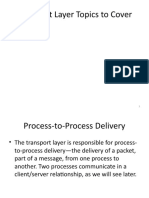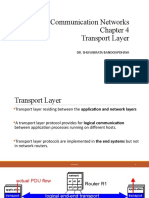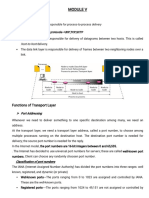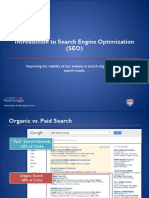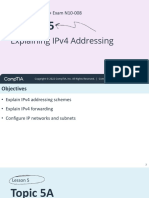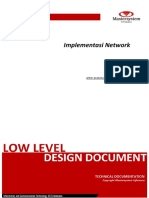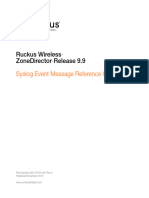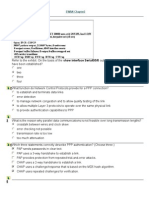0% found this document useful (0 votes)
12 views60 pagesTransport Layer Protocols
The document discusses process-to-process delivery in the transport layer, focusing on UDP and TCP protocols. It outlines the responsibilities of the transport layer, including packetizing, connection control, addressing, and reliability. Additionally, it highlights the characteristics of UDP as a connectionless protocol and TCP as a connection-oriented protocol, detailing their applications and functionalities.
Uploaded by
temsiyonmohe1Copyright
© © All Rights Reserved
We take content rights seriously. If you suspect this is your content, claim it here.
Available Formats
Download as PDF, TXT or read online on Scribd
0% found this document useful (0 votes)
12 views60 pagesTransport Layer Protocols
The document discusses process-to-process delivery in the transport layer, focusing on UDP and TCP protocols. It outlines the responsibilities of the transport layer, including packetizing, connection control, addressing, and reliability. Additionally, it highlights the characteristics of UDP as a connectionless protocol and TCP as a connection-oriented protocol, detailing their applications and functionalities.
Uploaded by
temsiyonmohe1Copyright
© © All Rights Reserved
We take content rights seriously. If you suspect this is your content, claim it here.
Available Formats
Download as PDF, TXT or read online on Scribd
/ 60




